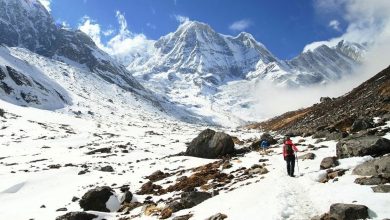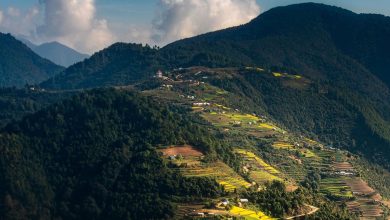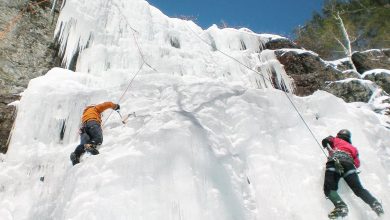Himalayan Yaks: Bovine Native To The Himalayas

The Himalayan Yak is a tough animal species that lives in the mountains and is really well adapted to the harsh conditions in high altitudes.
The Himalayan yak is easily recognized by its long, shaggy hair, big horns, and great strength. Himalayan Yak symbolizes toughness and endurance in the most difficult landscapes. They have adapted to live in the snowy mountains and vast plateaus of the region. The Himalayan yaks are an important part of the high-altitude landscape and culture of the area where they live.
Himalayan yaks are tough animals that can travel through rough areas and live in harsh conditions. These close relatives of domesticated cows and members of the Bovidae family are really important to those in the Himalayas. The yaks are strong and help carry heavy things. They also play a big role in the region’s economy, culture, and environment.
Himalayan Yaks are important in the Himalayan region. People use them for practical reasons like transportation and agriculture, but they also have a lot of cultural and symbolic meaning.
This means Himalayan yaks are a big part of their traditions, festivals, and stories. Yaks are so special to the people in this region that they are considered a part of their way of life.
In this article, we will talk about Himalayan yaks and why they are so special. We will discuss how people use them to make things like Himalayan yak chews and cheese and why they are important to the locals.
Physical Features of Himalayan Wild Yaks
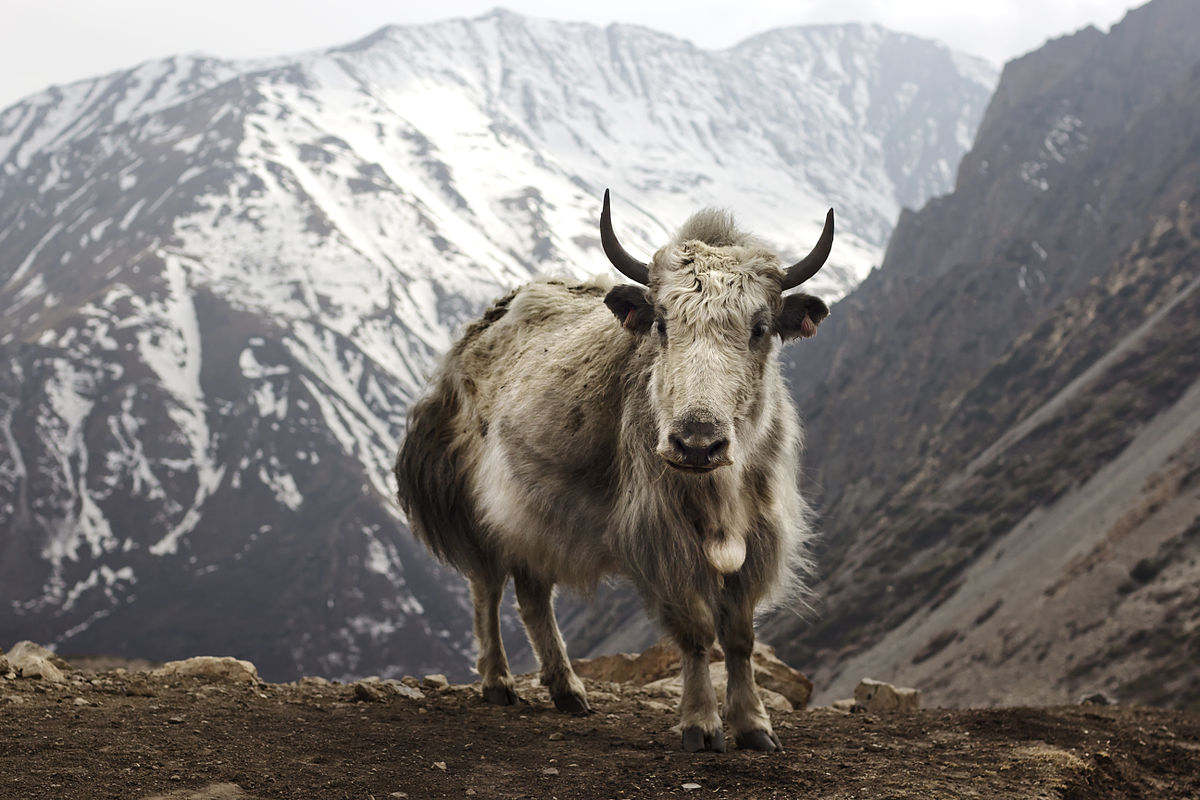
The Himalayan yak, also known as Bos Mutus, is a tough and strong animal that lives in the Himalayan mountains. They are bigger and stronger than regular yaks and have a shaggy coat that keeps them warm in the cold weather.
Himalayan wild yaks are huge-sized animals that can weigh between 880 and 2,650 pounds. They can also be as tall as 5 to 7 feet at the shoulder. Their long fur helps them stay warm in cold weather and can be black, brown, or white.
Himalayan Wild yaks in the Himalayan mountains have special abilities that help them live in high places with little air. They can breathe more air, have stronger blood cells, and a powerful heart that helps them handle low oxygen levels.
Himalayan yaks mostly feed on grasses and lichens. Their bodies can break down grasses and lichens really easily to get the nutrients they need to live in these difficult areas.
Himalayan Yaks have a significant role in the lifestyle of people living in the Himalayas. They can carry heavy things across steep and rough land. This helps people in remote areas move things around. Yaks are very strong and can go for a long time without getting tired.
They are part of the Himalayan ecosystem and have been part of the local culture for a long time.
Domesticated Himalayan Yaks VS Himalayan Wild Yaks
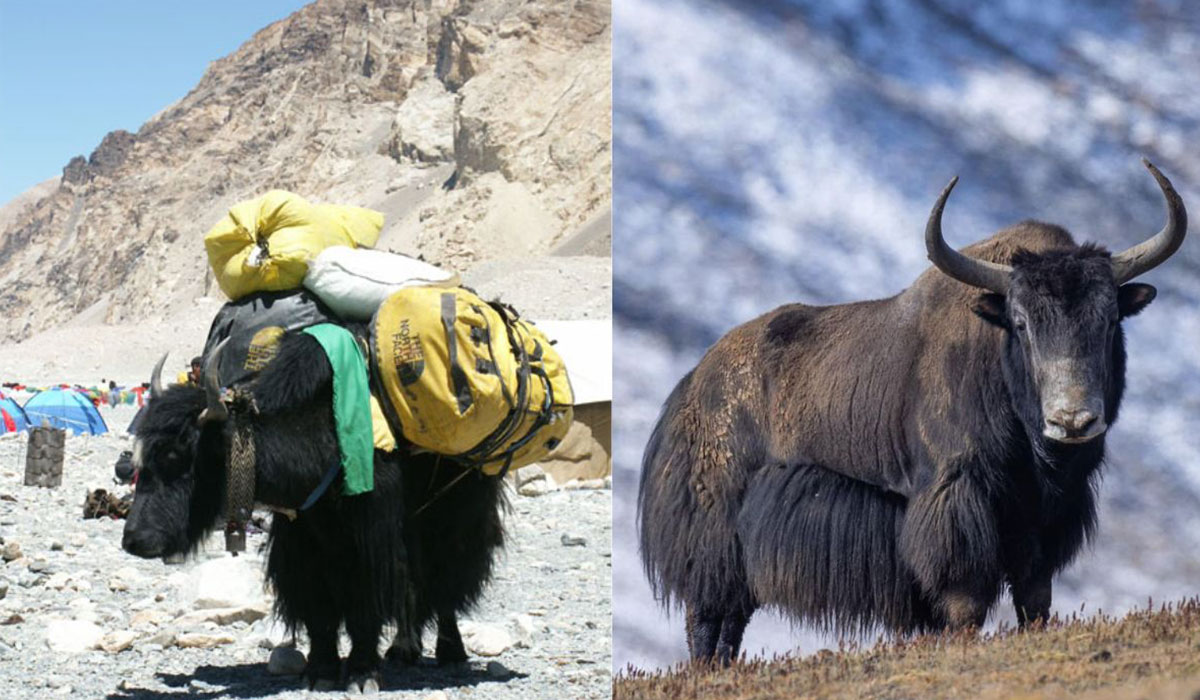
Himalayan yaks that are kept as pets and their wild counterparts, the Himalayan wild yaks, come from the same origin but have different looks and importance in the Himalayan area.
Domesticated Himalayan Yaks
Role and Usage
The local people breed Himalayan yaks to help them with their work. These yaks can carry heavy things over the rough land in the Himalayas. They also give milk, meat, and wool, which is important for the people to live and work there.
Physical Characteristics
People have been breeding yaks for many years, and that has made them look different than Himalayan wild yaks due to evolution and adaptations. Domesticated Himalayan yaks can have different colors and textures of fur, and their size and horns can vary depending on what each community wants.
Temperament and Environment
Yaks that people raise are usually calmer and more used to being around humans because they spend a lot of time with them. They usually live in lower areas with more food to eat, and the weather is not as tough as the high areas where wild yaks live.
Wild Himalayan Yaks
Role in the Ecosystem
Wild yaks found in the Himalayas, called Bos Mutus, are very important for keeping the natural balance and diversity of high-altitude areas.
Physical Characteristics
Wild yaks have a consistent appearance with a larger, stockier build. Their shaggy coat protects them from harsh high-altitude conditions and comes in black, brown, or white.
Habitat and Behavior
Wild yaks are found in the most challenging and high-altitude terrains, living in groups at elevations between 13,000 and 20,000 feet above sea level.
Basically, both Himalayan wild yaks and domesticated Himalayan yaks come from the same ancestors. However, due to different needs and interactions, they have developed distinct characteristics regarding their roles, physical attributes, behaviors, and environment.
Domesticated yaks have been influenced by human usage, while wild yaks have evolved to survive in the challenging, high-altitude ecosystems of the Himalayas.
Usage of Himalayan Yaks for Transportation

For many years, Himalayan yaks have been important in helping people and tourists travel around the difficult terrain of the Himalayas. These tough animals are respected for their ability to move around the rough landscape, and they have been a key part of the transportation system in the area.
In remote areas where motorized vehicles are impractical, locals rely on yaks as pack animals. Himalayan Yaks possess remarkable strength and adaptability that enable them to navigate steep, rocky paths with ease.
They transport essential goods like food, construction materials, and trade items to remote villages and settlements, ensuring the availability of necessities in regions where other modes of transport struggle to reach. Himalayan Yaks are highly valued in the daily lives of locals due to their reliability, especially in areas without proper roads.
Yaks have a significant role in the lives of locals in the Himalayas. However, they also serve as a means of adventure and exploration for tourists visiting the area. Trekking and hiking expeditions in these remote regions often require yaks for transportation.
Tourists utilize yaks to carry supplies, camping gear, and equipment during multi-day treks. This helps to ease the burden on trekkers and ensures a smoother journey through the rugged terrain.
Himalayan Yaks not only provide logistical support but they also enhance the experience, offering an authentic connection to traditional travel in the Himalayan landscapes.
The use of Himalayan yaks for trekking and transportation is based on traditional methods guided by experienced herders who understand the behavior of yaks and the terrain.
Himalayan Yaks are typically organized into caravans, and the goods are loaded in a balanced and secure manner, ensuring the safety and stability of the animals while carrying heavy loads across remote and challenging paths.
These practices not only serve practical purposes but also highlight the deep connection between culture, tradition, and the yaks’ ability to adapt to the demanding landscapes.
Use of Himalayan Yaks for Food
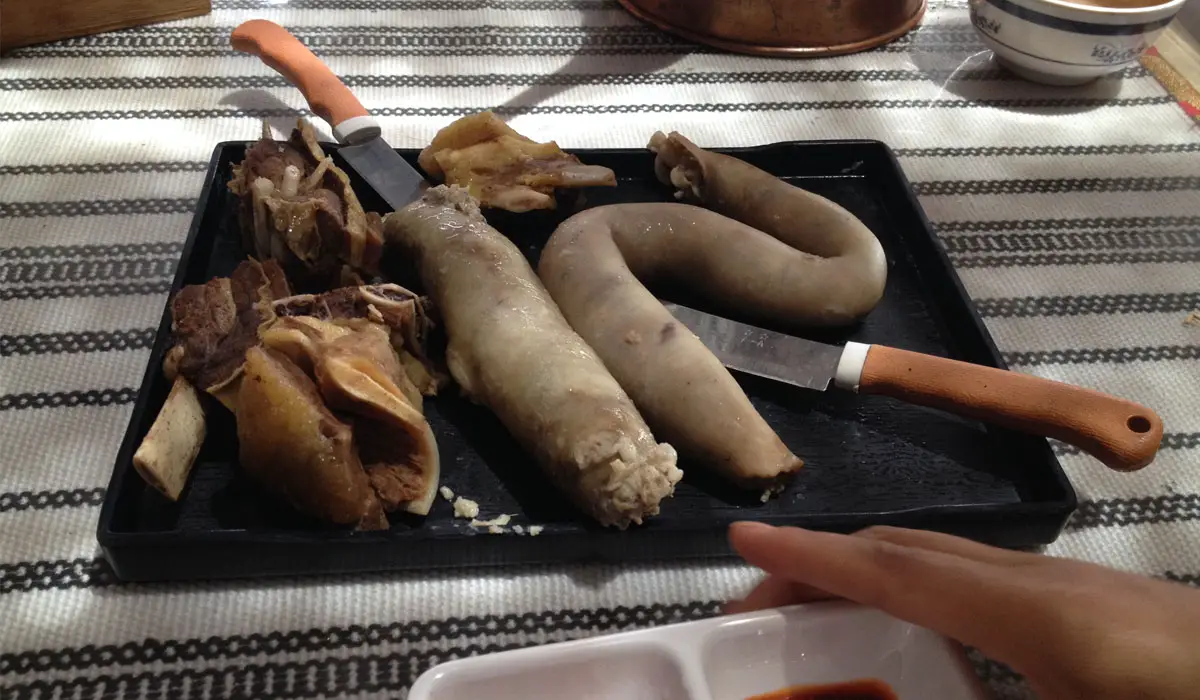
Yaks are an essential source of food and livelihood for the local communities in the Himalayan region. The people living in the high-altitude terrains rely heavily on their milk, meat, Himalayan yak cheese, Himalayan yak chews, and other by-products, contributing significantly to their traditional diet and economy.
Himalayan Yak Meat
People in the Himalayan communities rely on Himalayan yak meat as an essential part of their diet. This type of meat is healthy because it has less fat than other red meats, and it is a good source of protein and other essential nutrients. They use yak meat in many traditional dishes, especially during the winter when it’s hard to find fresh fruits and vegetables.
Himalayan Yak Milk
Yak milk is an important resource in the region because it has more fat than cow’s milk. People use it to make things like butter, cheese, and yogurt. These dairy products are a big part of the local food and give people important nutrients, especially when fresh fruits and vegetables are hard to find because of the tough weather and limited farming in the area.
You may also like:
- Animals of Nepal | Wildlife Conservation Efforts In Nepal
- 12 National Parks Of Nepal
- Best Places To See Tigers In Nepal
- Wildlife On Mount Kilimanjaro
- What Animals Live On Mount Everest?
View this post on Instagram
Himalayan Yak Cheese
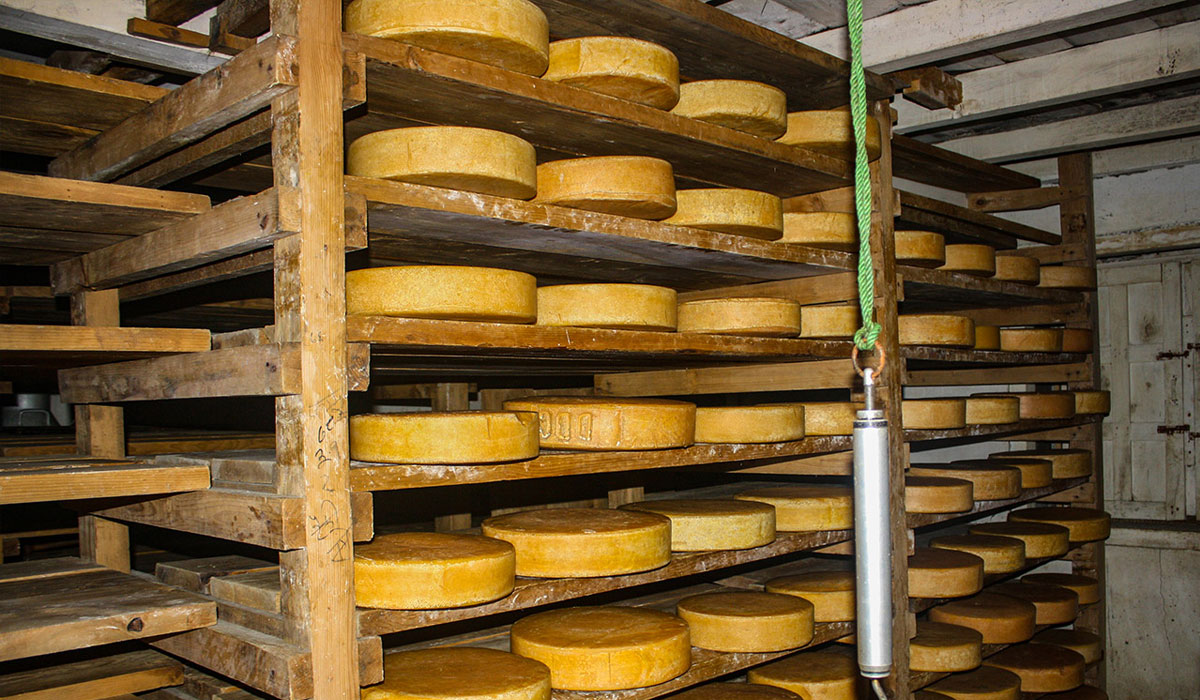
Himalayan chhurpi, a unique cheese made from yak milk, is a traditional craft passed down through generations in the Himalayan region.
Himalayan yak cheese is a type of cheese that IS not very common. It is mostly known in the Himalayan region and some specific markets. However, because of its special taste and cultural importance, more people around the world are becoming interested in it. This has led to an increase in its export to other parts of the world, especially among food lovers who enjoy trying unique and different foods.
Milk Extraction and Timing
Himalayan Yak cheese is made during the lactation period of female yaks, usually in the spring and summer months. During this time, the yaks graze in dense fields, producing higher-quality milk. The milk collected from the female yaks is used in the Himalayan Yak cheese-making process.
Himalayan Yak Cheese-Making Process
To make yak milk cheese, the milk is heated and curdled using natural ingredients like plant extracts or acidic substances found locally. The curds are then pressed into molds and left to ferment and age for several weeks to months or even up to a couple of years, depending on the desired texture and flavor.
Taste and Characteristics
Himalayan Yak cheese has a different taste and feel. When it is new, it is hard and breaks easily. As it gets older, it becomes harder and has more flavor. The cheese tastes slightly smoky and nutty, with a little tang. It is really tasty because it takes a long time to make. People who like exotic foods like it a lot.
Shelf Life and Export
Himalayan Yak cheese lasts a long time when aged properly, which makes it great for storing and transporting in mountainous areas where refrigeration may not be available. Although it is mostly produced for local use, it is becoming more popular for export to regions where people want unique and interesting cheeses with great flavors and history. It can last for months or even years, so it’s a good option for people who want to enjoy it for a long time.
Himalayan Yak Chews
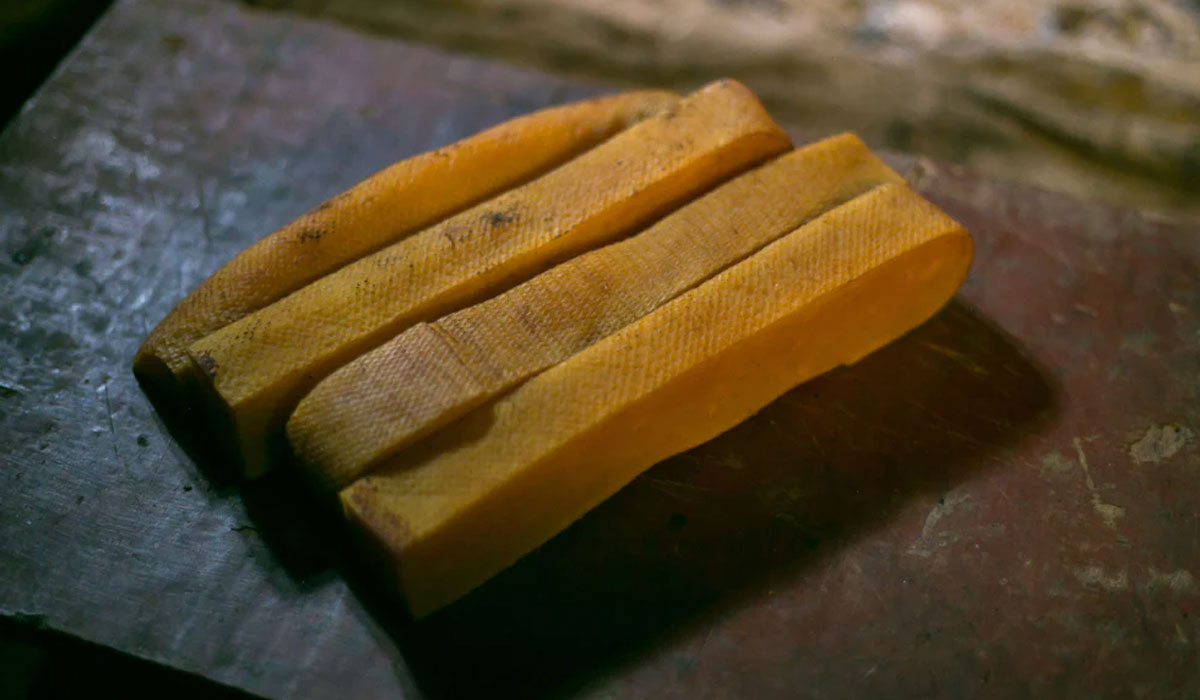
Himalayan yak chews are hard dog treats made from the cheese of yak milk. They last a long time. Dogs like them because they’re tough and can be chewed for hours. They are a popular treat for dogs.
Production Process
To make Himalayan yak chews, they heat up yak milk and mix it with a little bit of lime or lemon juice. They boil and stir the mixture until it gets thick, then pour it into molds and let it harden. Finally, they leave the chews out to dry for a few weeks or months until they become hard, resulting in a Himalayan Yak Chew treat that lasts a long time.
Natural Ingredients and Durability
Himalayan Yak chews are made with natural ingredients, mostly yak milk and a few things like salt and lime juice. This makes them hard and tough, so dogs can chew them for a long time. They don’t have any fake colors, flavors, or preservative chemicals added, so they are better for dogs than other kinds of chews you can buy.
Benefits for Dogs
Himalayan Yak chews are a tasty way to keep your dog’s teeth and gums healthy. They stop plaque and tartar buildup, and they last longer than most other dog treats. This makes them perfect for dogs that love to chew.
Variety and Size
Himalayan yak chews come in different sizes and shapes. They have bars, sticks, nuggets, and rings that are perfect for big and small dogs. The chews have different textures and strengths depending on how they are dried.
As the world changes, it is important to protect the legacy of the Himalayan yaks. This is not just about preserving them but also recognizing their lasting impact and the close relationship they have with the land and the people who live there.
